What to do if your rotary tiller won't start

With winter almost over, it’s finally time to till the vegetable patch and then start sowing or transplanting vegetables that you will harvest in late spring and summer. If you've already done the bulk of your tilling before winter, now is a good time to give it another quick going over.
Today you have some spare time and the soil is of suitable consistency, so you take the rotary tiller out of the garage and try to start it, but it won't start. Or maybe your rotary tiller chugs into life and then cuts out immediately. The problem might be simple to solve, so before you take it to an assistance centre or resign yourself to working with a hoe, let's see how to check why your rotary tiller won’t start.
Check the basic controls
When inspecting and performing maintenance on your rotary tiller, always wears a pair of utility gloves. Make sure that the rotary tiller’s engine is switched off and, if you don't need to try starting it, also disconnect the spark plug.
There might be a straightforward reason why your rotary tiller fails to start. Check the position of the controls: the on/off switch must be on and the starter (choke) closed. Then try to start the rotary tiller again following the correct steps:
-
Stand on the side where the engine is located, not on the opposite side or the handlebar side, and especially not where the cutters (or blades) are.
-
Hold the rotary tiller steady and pull the starter rope.
-
Allow the engine to warm up and gradually set the choke to the open position.
-
Do not accelerate while starting the engine: this would start the cutter blades rotating.
Check the fuel
If the rotary tiller still doesn’t start:
-
Check that the fuel tank isn’t empty: if necessary, add fuel. The fuel must be fresh, of good quality and clean: make sure that no dirt, water or incompatible fuel (such as petrol-oil mixture, if the engine is a 4-stroke) gets into the tank.
-
Make sure that the fuel is still fresh. If the rotary tiller has not been used for months, the fuel might have deteriorated and/or clogged some parts of the carburettor, thereby stopping or reducing the supply of petrol/mixture. In this case, empty and clean the tank and carburettor, then add fresh, new fuel. This procedure applies to rotary tillers with either 2-stroke petrol engine or 4-stroke petrol engine, such as the Oleo-Mac MH 155 K compact rotary tiller or the MH 175 RKS and MH 198 RKS medium power rotary tillers.
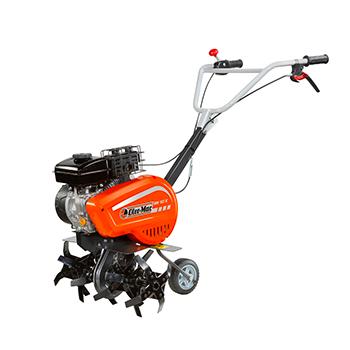
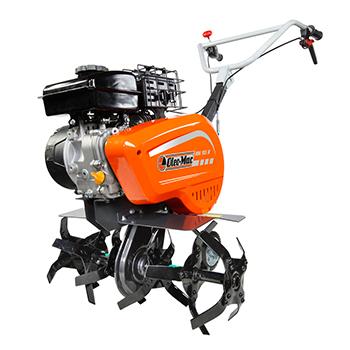
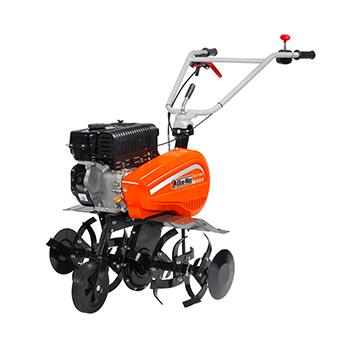
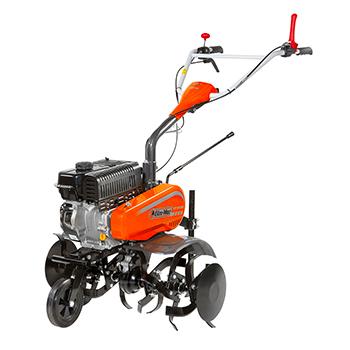
Check the condition of the spark plug
If, after doing all this, your rotary tiller still fails to start, it might be an electrical problem. First of all check the spark plug: if it is dirty clean it, if necessary adjust the distance between the electrodes, or if it is worn replace it. If the spark plug looks abnormal, this is a sign of poor carburetion or some other malfunction, in which case we advise you to take the rotary tiller to an assistance centre. You can find your nearest Oleo-Mac assistance centre here.
If the spark plug is in working order, the problem could be the ignition coil or the spark plug wire and boot cap. To test the operation of the coil or to replace a damaged spark plug wire and boot cap, enquire at one of our assistance centres.
Do you want to learn more about how the coil works? See this article on how a coil works: it relates specifically to brushcutters, but also applies to rotary tillers and any other garden tool with an internal combustion engine.
After multiple starting attempts the rotary tiller engine may flood, i.e. fill with petrol which wets the spark plug and thereby prevents it from sparking. With the rotary tiller switch off, remove the spark plug to check whether it is wet with petrol: if it is, then the engine is flooded. Dry the spark plug and follow the flooded engine procedure described in the user manual for your rotary tiller (and ideally try it again after changing the spark plug). If you have an Oleo-Mac rotary tiller, proceed as follows:
-
Open the throttle valve.
-
Pull the starter rope several times to empty the engine combustion chamber.
-
Refit the spark plug and connect the boot cap.
-
Reassemble the rotary tiller.
-
Turn on the switch.
-
Open the starter (even if the engine is cold).
-
Start the engine.
Have you been through all the checks, but your rotary tiller still won't start? Then you need to consult a technician: for Oleo-Mac rotary tillers, you can count on the experience and technology of our assistance centres.

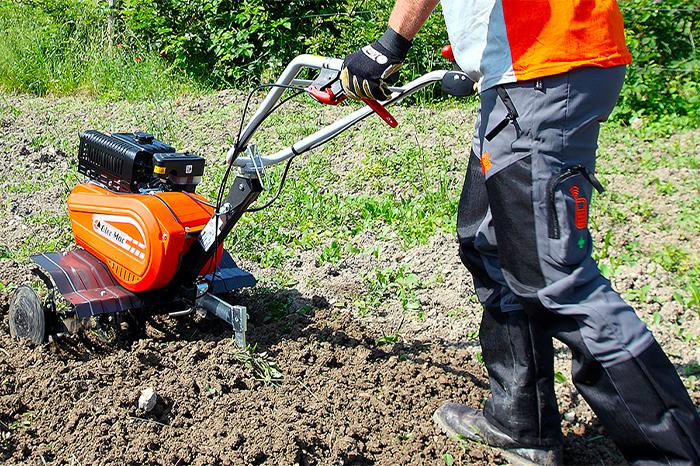
How to prevent a rotary tiller from failing to start or cutting out immediately
We often reiterate this in our blog: maintenance and cleaning are key to the efficient operation and safety of garden tools. This also applies to rotary tillers, so to prevent yours from failing to start:
-
Check the condition of the spark plug often.
-
Whether it's petrol or a petrol-oil mixture, always refill with fresh, high-quality and clean fuel. You can use alkylated fuel, which keeps longer than standard formulations, such as
Oleo-Alkylate petrol for 4-stroke engines or Oleo-Mix Alkylate special mixture for 2-stroke engines -
Alternatively, you can extend the life of regular fuel with an additive for petrol, such as Oleo-Mac Additix 2000, which keeps petrol and mixture fresh for at least 12 months.
-
If you plan to keep your rotary tiller out of action for a long time, empty the fuel tank and carburettor.
Rotary tillers are a powerful workmate for tilling soil in the garden, countryside and allotment: here you will find our suggestions on how to till soil.
Are you choosing your first rotary tiller or replacing an old one? Read this article on how to choose the right rotary tiller for your needs, and take a look at this video on how to properly use a rotary tiller.



